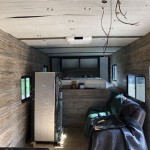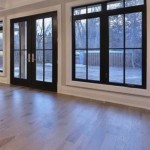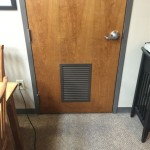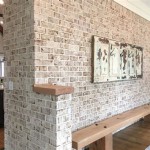Interior Doors with Cat: An In-Depth Guide for Clinicians
Interior doors are an integral part of any home, providing privacy, sound insulation, and aesthetic appeal. However, for clinicians working with clients who have cats, choosing the right interior doors can be a crucial factor in creating a safe and comfortable environment for both humans and felines. This article provides an in-depth guide for clinicians, exploring the various aspects of interior doors suitable for homes with cats.
Choosing the Right Door Material
The material of your interior doors can significantly impact the safety and well-being of your client's cat. Some materials are more prone to scratching and damage, while others are more resistant.
-
Solid wood doors:
These are durable and elegant, but they can be easily scratched by a cat's claws. However, they can be refinished or painted to cover up minor scratches. -
Solid core doors:
These doors offer a good balance between durability and affordability. They are typically made from a core of particleboard or MDF covered with veneer or paint. -
Hollow core doors:
These doors are the least expensive option, but they are also the least durable. They are more prone to damage from scratching and may not offer adequate sound insulation. -
PVC doors:
These doors are becoming increasingly popular due to their durability, water resistance, and ease of cleaning. They are also resistant to scratching, making them a good choice for homes with cats.
When choosing a material, consider the following factors:
-
The cat's scratching habits:
If the cat is known to be an aggressive scratcher, choose a more durable material like solid wood or PVC. -
The aesthetic preferences of the client:
Consider the overall décor of the home and choose a material that complements the existing style.
Cat-Proof Door Features
In addition to the material, certain door features can make them more cat-friendly and less prone to destruction.
-
Cat-resistant door hardware:
Standard door knobs and levers can be tempting for cats to claw at. Consider replacing them with cat-proof hardware, such as door handles with a smooth, rounded surface or lever handles with a protective coating. -
Door stops:
Use door stops to prevent doors from slamming shut and potentially injuring a cat. Choose stops that are positioned high enough to be out of reach of the cat. -
Cat flaps:
These allow cats to come and go as they please, eliminating the need for humans to open and close doors. Consider installing a cat flap in a door that leads to an outdoor area or a designated cat room.
When incorporating cat-proof door features, it's crucial to consider the specific needs and behavior of the client's cat. For example, a cat flap might not be suitable for a cat that is prone to escaping or for a home with a large dog.
Preventing Damage and Ensuring Safety
Even with the best materials and features, cats can still cause damage to doors. It's vital to take preventive measures to minimize the risk.
-
Training:
Train the cat to avoid scratching the doors. This can involve using positive reinforcement techniques like rewarding the cat for scratching appropriate objects, such as cat scratching posts or scratching pads. -
Catnip:
Provide the cat with catnip-filled toys or scratching posts. Catnip can be a powerful deterrent to scratching doors. -
Protective coverings:
Consider applying a protective layer to the door surface. This could be a transparent film, a thick coat of paint, or a decorative fabric. -
Regular inspection:
Regularly inspect the doors for any signs of damage and address them promptly. This can prevent minor scratches from turning into major problems.
Ensuring the safety of the cat is paramount. Avoid using hazardous materials or chemicals that could harm the cat. Opt for non-toxic paints and finishes, and avoid using any materials that the cat could ingest or inhale.
Interior doors with cats pose unique challenges. By understanding the various aspects of door materials, features, and preventive measures, clinicians can guide clients in creating a safe and comfortable home environment for both humans and their feline companions.

Shelter Housing For Cats Practical Aspects Of Design And Construction Adaptation Existing Accommodation Denae Wagner Kate Hurley Jenny Stavisky 2024

How To Keep Cats Out Of Rooms 12 Steps With Pictures Wikihow

Shelter Housing For Cats Practical Aspects Of Design And Construction Adaptation Existing Accommodation Denae Wagner Kate Hurley Jenny Stavisky 2024

2024 Isfm Aafp Cat Friendly Veterinary Environment Guidelines Samantha Taylor Kelly St Denis Sarah Collins Nathalie Dowgray Lh Ellis Heath Ilona Rodan Linda Ryan

How To Cat Proof Your Home Zoetis Petcare

2024 Aafp Intercat Tension Guidelines Recognition Prevention And Management Ilona Rodan Daniela Ramos Hazel Carney Theresa Deporter Debra F Horwitz Daniel Mills Kristyn Vitale

Using Patients Sensory Perception To Enhance Their Veterinary Visits Today S Nurse

2024 Isfm Aafp Cat Friendly Veterinary Environment Guidelines Samantha Taylor Kelly St Denis Sarah Collins Nathalie Dowgray Lh Ellis Heath Ilona Rodan Linda Ryan

Addressing Feline Behavi Issues Today S Veterinary Nurse

The Cat Encyclopedia Definitive Visual Guide Flipbook By Thoyyibah S Bookchest Fliphtml5
Related Posts








